
5th SMART Lecture by Albert-László Barabási
On October 12th, we had the great pleasure to host Albert-László Barabási at CeMM. After several rounds of meetings with PhD students and faculty, as well as a stimulating discussion with invited artists in the brain lounge, Albert-László Barabási delivered the 5th SMART lecture. His talk on “Network Science: From the WWW to Human Diseases” attracted an exceptional audience of some 150 people.
After a general introduction and welcome note by the Scientific Director Giulio Superti-Furga, the head of bioinformatics at CeMM, Jörg Menche, introduced the speaker in more detail, as he has worked as a postoc in his lab for over four years. In…
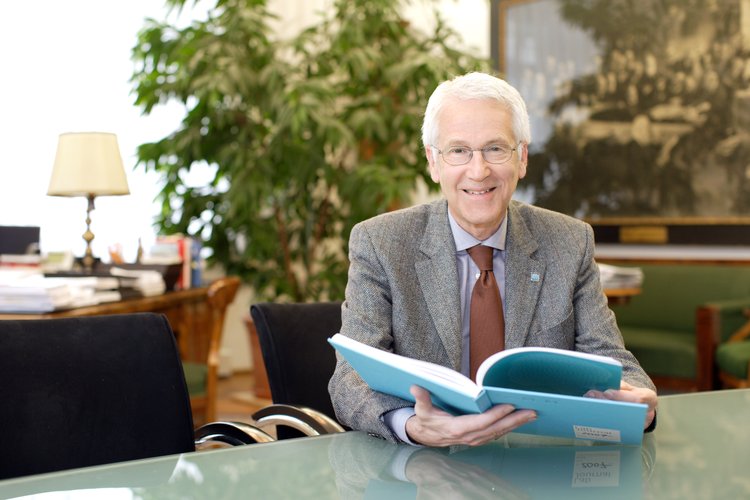
Thank you to Rectorate of the Medical University of Vienna
CeMM would like to welcome the new Rector of the Medical University of Vienna, Prof. Dr. Markus Müller, and his team, and takes the occasion to thank the former Rector, Prof. Dr. Wolfgang Schütz, for his continues support over the last years. Rector Schütz played a crucial role in the development of CeMM, its location in the middle of the medical campus, and set the path for a fruitful collaboration, being always open for new ideas and initiatives, like the common launch of the Personal Genome and educational Project “Genom Austria”. The Medical University of Vienna is one of the key research partners of CeMM. We are looking forward to…
Read more
A “hot” approach for understanding drug action and identifying new drug targets
How do successful drugs actually work? And how can we identify new targets for drug discovery to enable the development of novel potential therapeutics? A key challenge for scientists in academia and the pharmaceutical industry is to find out how small molecules such as drugs or cellular metabolites act within a cell – who are the mediators and effectors required for a drug or metabolite to exert their effect e.g. on cell proliferation, shape etc.? Based on the simple fact that interaction between a small molecule - such as a drug - and a given target protein increases the thermal stability of that protein, scientists at CeMM have developed a…

Festive Lecture by George Church
How new genomic technologies will impact us all
On 17 September 2015 a festive lecture held by geneticist George Church (Harvard Medical School) marked the beginning the GET Global Conference, hosted by CeMM in the context of Genom Austria. Celebrating the 10th anniversary of the Personal Genome Project, the conference brought together pioneers of personal genome sequencing and open science, discussing technological advances and associated ethical and societal aspects.
George Church is one of the inventors of genome sequencing and an advocate of open science. He based his talk entitled How new genomic technologies will impact us all on…
Read more
Obituary William E. Paul
It is with great sadness that we learn of the decease of Prof. Dr. William E. Paul, Chief of the Laboratory of Immunology, National Institute of Allergy and Infectious Diseases, Bethesda, USA. Bill Paul was a member of the Scientific Advisory Board of CeMM from the very beginning and had a great influence on the development of our institute. We lose an extraordinary scientist and highly esteemed mentor. His advice, constructive criticism and encouraging words will be dearly missed by the CeMM Directors and by the entire CeMM Faculty. Our thoughts are with his family and collaborators as well the large number of disciples.
As a scientist…
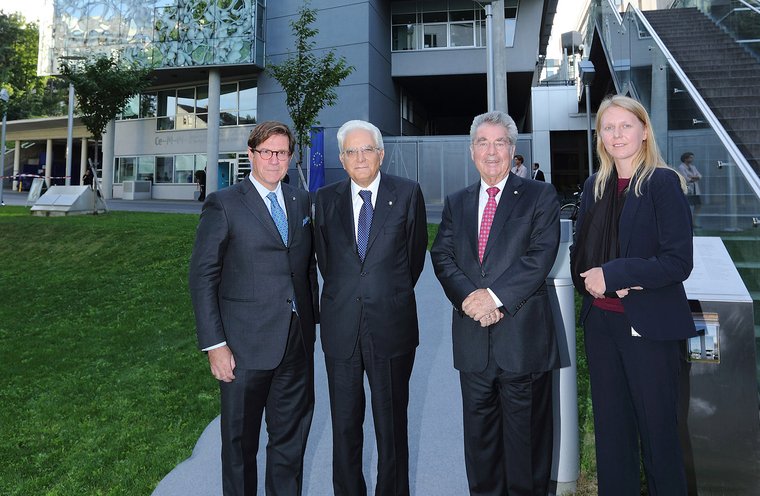
Visit of H.E. Sergio Mattarella and H.E. Heinz Fischer at CeMM
On September 16, 2015 CeMM was honored by the visit of H.E. Sergio Mattarella, President of the Republic of Italy, and H.E. Heinz Fischer, President of the Republic of Austria. It was the first official visit of President Mattarella to Austria and we are very grateful for this unique opportunity to present CeMM and its research highlights to such an honorable audience.
The visit started with a short introduction to CeMM’s art façade created by Peter Kogler and a stopover on the CeMM terrace to enjoy the beautiful view over Vienna. The guests then entered the CeMM Brain Lounge, where Italian students and postdocs had the opportunity to…
Read more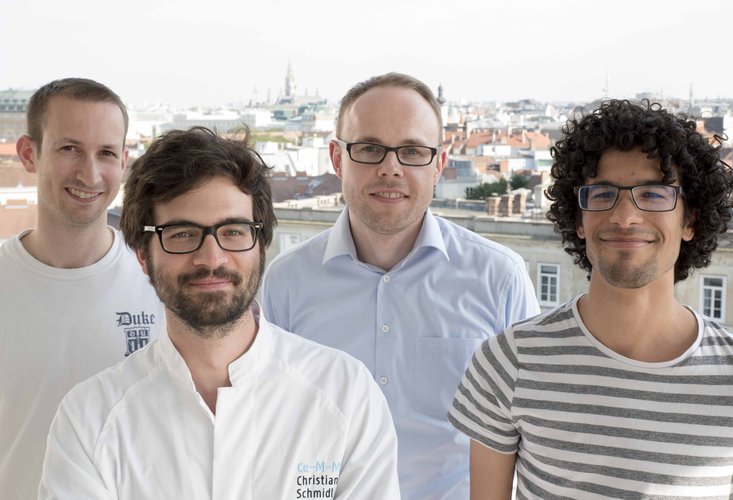
ChIPmentation: fast, robust, low-input ChIP-seq for histones and transcription factors
To understand how genes are regulated, researchers create genome-wide maps that connect regulatory proteins to their target sites on the DNA. This analysis is typically performed using “chromatin immunoprecipitation followed by sequencing” (ChIP-seq). With this method, the cell’s chromosomes are cut into small pieces, and an antibody is used to fish out those DNA fragments that are bound by the regulatory protein of interest. Unfortunately, ChIP-seq is a relatively complex protocol that requires a lot of cells, which makes it difficult to analyze some of the most interesting cell types – for example stem cells and cancer initiating cells.
…
Read more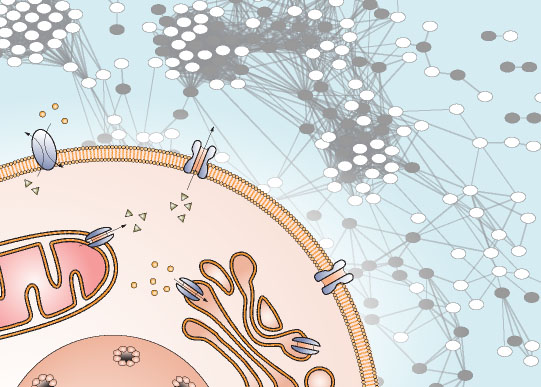
An international group of laboratories, led by CeMM, publishes in Cell the scientific arguments for more systematic research on solute carriers proteins, the major class of drug transporters
Recent scientific insights and technical breakthroughs strongly argue for a global, efficient approach to map the gene products that manage the interface between biological systems and their environment.
The proteins that transport nutrients and drugs across cellular membranes into cells and organisms have paradoxically not been studied in an orderly, efficient fashion, despite their clear importance. Recent work at CeMM on regulation of the mTOR pathway and mechanism of cancer drug resistance has identified two members of the large group of solute carrier proteins (SLCs) as critical for these processes (Rebsamen et al, Nature 2015; Winter…
Read more
www.ChemicalProbes.org, a new crowdsourcing initiative
The Superti-Furga laboratory at CeMM is part of a new crowdsourcing initiative, a wiki site called www.chemicalprobes.org that recommends appropriate chemical probes for biological targets, provides guidance on their use, and documents their limitations. Chemical probes are chemical tool compounds that enable scientists to study proteins in living cells without genetic modifications and which may be interesting drug targets to treat diseases like cancer. Many chemical probes produce spurious results that can lead researchers to wrong conclusions about the proteins and drug molecules they are studying. The use of optimal and well-documented…
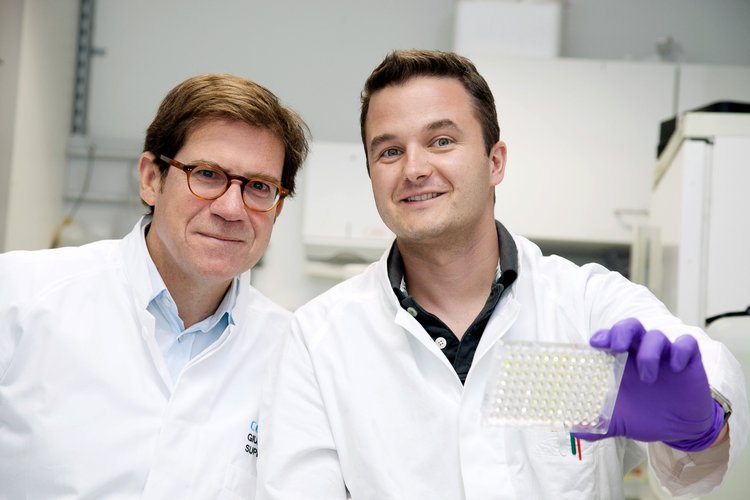
New epigenetic target and drug in leukemia
Through the investigation of specific interaction partners of the leukemia-associated, truncated variant of C/EBPa, the research group of Giulio Superti-Furga, Scientific Director at CeMM Research Center for Molecular Medicine of the Austrian Academy of Sciences, has gained new mechanistic insights into the molecular details of oncogenic transformation by C/EBPa mutant proteins. Florian Grebien, postdoctoral fellow in Superti-Furga´s team and since 2014 group leader at the Ludwig Boltzmann Institute for Cancer Research, found that the short, leukemic C/EBPa mutant can exert its oncogenic functions through a selective interaction with Wdr5, a…
Read more